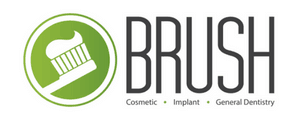Causes and Treatments of Cavities: How to Prevent and Treat Tooth Decay
Cavities, also known as tooth decay, are one of the most common dental problems. They occur when the enamel on the teeth breaks down, allowing bacteria to create small holes. If left untreated, cavities can lead to pain, infection, and even tooth loss. Understanding what causes cavities and how to treat them can help you keep your teeth healthy and strong.
Tooth decay is caused by a combination of factors, including poor oral hygiene, frequent snacking, and consuming sugary or acidic foods and drinks. Plaque, a sticky film of bacteria, forms on your teeth if you don’t brush and floss regularly. The bacteria in plaque produce acids that attack tooth enamel, leading to decay.
Knowing the signs of tooth decay is crucial for early detection and treatment. Symptoms can include toothache, sensitivity to hot or cold, and visible holes or discoloration in the teeth. Regular dental check-ups can help catch cavities early, making treatment simpler and more effective.
Join us, the best dentists in U District Seattle, as we explore the common causes of cavities, the warning signs of tooth decay, effective treatments for removing cavities, and preventative measures to keep your teeth healthy. By understanding these aspects, you can take better care of your oral health and prevent future dental issues.
Common Causes of Cavities
Understanding the causes of cavities can help you take steps to prevent them. Cavities develop when plaque, a sticky film of bacteria, builds up on your teeth. The bacteria in plaque produce acids that attack tooth enamel, leading to decay over time.
Here are some common causes of cavities:
- Poor Oral Hygiene: Not brushing and flossing regularly allows plaque to build up and create acids that damage your teeth.
- Frequent Snacking: Eating sugary or starchy snacks throughout the day provides a constant source of fuel for plaque bacteria.
- Sugary and Acidic Foods and Drinks: Consuming soda, candy, and fruit juices can wear down enamel faster due to their high sugar and acid content.
- Dry Mouth: Saliva helps wash away food particles and plaque. If you have a dry mouth condition, your risk for cavities increases.
- Worn-Out Dental Work: Fillings, crowns, and other dental work can break down over time, creating spaces for bacteria to grow.
Being aware of these causes allows you to modify your habits to better protect your teeth from decay.
Warning Signs and Symptoms of Tooth Decay
Recognizing the warning signs of tooth decay early can make treatment easier and more effective. Tooth decay progresses through several stages, starting from minor enamel damage to significant tooth structure loss.
Here are some common signs and symptoms of tooth decay:
- Toothache: Pain or discomfort in your teeth can indicate decay. The pain may be constant or occur when eating or drinking.
- Sensitivity: Increased sensitivity to hot, cold, or sweet foods and beverages can signal that your enamel is wearing down.
- Visible Holes or Pits: Cavities can appear as small holes or pits on the surface of your teeth. You may also notice dark spots or discolorations.
- Bad Breath: Persistent bad breath or a bad taste in your mouth can be a sign of decay and bacteria buildup.
- Swelling or Pus: Swelling or pus around a tooth can be a more severe sign of decay or infection, requiring immediate dental attention.
By paying attention to these symptoms, you can seek dental care before the decay worsens. Regular dental check-ups in University District Seattle are vital to catching tooth decay early, allowing for simpler and less invasive treatment options.
Effective Treatments for Cavity Removal
Treating cavities early can prevent further damage to your teeth. Various treatment options are available, depending on the severity of the decay. Here’s a look at some common treatments for cavity removal:
- Fillings: Dentists most often use fillings to treat cavities. They remove the decayed part of the tooth and fill the space with materials like composite resin, silver amalgam, or gold.
- Fluoride Treatments: For early-stage tooth decay, fluoride treatments can help restore enamel and sometimes reverse cavities in their initial stages.
- Crowns: If a tooth is severely decayed, a crown—a custom-fitted cap—may be placed over the tooth to restore its shape, size, and function.
- Root Canals: When decay reaches the inner pulp of the tooth, a root canal may be necessary. This procedure involves removing the infected pulp and sealing the tooth to prevent further infection.
- Extractions: In cases where the tooth is extensively damaged and cannot be saved, an extraction may be necessary. The dentist will remove the tooth to prevent the spread of infection.
Your dentist will determine the most suitable treatment for your specific condition, ensuring your oral health is restored effectively.
Preventative Measures to Avoid Cavities
Preventing cavities involves good oral hygiene practices and lifestyle choices. By taking steps to care for your teeth, you can significantly reduce your risk of developing tooth decay. Here are some effective preventative measures:
- Brush and Floss Daily: Brush your teeth at least twice a day with fluoride toothpaste and floss daily to remove food particles and plaque between your teeth.
- Visit Your Dentist Regularly: Schedule regular dental check-ups and cleanings. Professional cleanings remove tartar and plaque that you might miss at home, and check-ups can catch early signs of decay.
- Eat a Nutritious Diet: Avoid sugary and acidic foods and drinks. Instead, eat a healthy diet rich in vegetables, fruits, whole grains, and dairy products to strengthen your teeth.
- Use Dental Sealants: Dental sealants are thin, protective coatings applied to the chewing surfaces of your back teeth. They can prevent food and bacteria from getting trapped in the grooves and causing decay.
- Stay Hydrated: Drinking water helps wash away food particles and bacteria. Fluoridated water also helps strengthen enamel.
By following these steps, you can maintain strong and healthy teeth, reducing your risk of cavities.
Understanding the causes of cavities and recognizing the symptoms early on can help you take better care of your teeth. Early detection and treatment are crucial for preventing further damage and ensuring your oral health remains optimal. Effective treatments like fillings, crowns, and fluoride treatments can help manage and remove cavities, while adopting good daily habits can prevent tooth decay from occurring in the first place.
At Brush Dental, we are committed to helping you achieve and maintain a healthy smile. Our team offers quality comprehensive dental care in Seattle to address and prevent cavities and other dental issues. Schedule your appointment with the best dentists in the U District at Brush Dental today to ensure your teeth stay strong and your smile remains bright. We proudly serve the University District, Wallingford, and North Seattle area. Contact us now to take the first step toward better oral health!







